Why light bulbs often burn out, what can be done
Light bulbs burn out always and everywhere. This happens in chandeliers, sconces, floor lamps and bedside lamps, and, worst of all, even in the refrigerator. Can you imagine such a nightmare? You come for a snack at night, open the refrigerator, and there... It’s dark. So you have to leave hungry. There can be a great many reasons for such misfortune. The voltage may jump or the careless Chinese may have made a bad light bulb. Let's figure out why our light sources burn out and what can be done to make them last at least a little longer. Otherwise... It’s unpleasant to remain hungry at night.
The content of the article
Why do you have to constantly change light bulbs?
As we have already mentioned, there may be several reasons why light bulbs burn out one after another. In addition to power surges, the problem may be poor quality contacts inside the electrical circuit, frequent switching on and off of devices, elevated ambient temperatures, extraneous vibration, etc. All this does not contribute to the long “life” of light sources.
Power surges
The standard voltage in our electrical networks should correspond to two hundred and twenty volts. Most electrical appliances are designed to work with this voltage. If for some reason it exceeds the required value, then the tungsten filament, thanks to which the light bulb glows, begins to heat up more than expected, which leads to a decrease in service life. 
Check the voltage using a multimeter. Make it a habit to take measurements twice a day and you will be able to determine the period when such jumps occur. Most often this happens in the evening, when all people come home from work, and at those moments when enterprises begin work. An additional sign of a power surge in the network is the simultaneous knocking out of the circuit breakers when the light bulb burns out.
If you have detected power surges in your electrical network, then you need to do this:
- Purchase light sources that can operate at higher voltages. For example, with two hundred thirty or two hundred forty volts.
- Provide additional protection. A protective block is installed on each switch and allows you to protect the lamps from unnecessary loads, since the switching occurs smoothly.
- Install a voltage stabilizer. This must be done in the first junction box.
- Replace all lamps with fluorescent or LED ones. They are not afraid of power surges in the network.
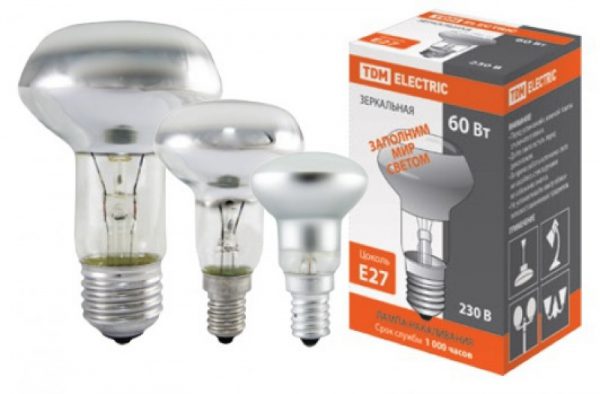
Reference. Not every power surge necessarily knocks out traffic jams and machines. Or rather, they don’t always even break out precisely because of these jumps. It is likely that many devices were connected to the network at the same time and their total power exceeded the permissible threshold. And a short circuit also knocks out the machines.
Low quality contacts
In Soviet times, plastic sockets were installed on lamps; the cheaper the device, the worse the quality of the plastic used. Good luck if you come across a ceramic cartridge - it was very rare. Such lighting devices were supposed to be equipped with light bulbs with a power of no more than forty watts. If you insert a brighter one, for example, sixty watts, then the cartridge will gradually become covered with cracks. Hence the burning of contacts and the presence of oxide on them.
If, having fulfilled all the conditions, you realize that the house is too gloomy, then think about replacing all the lamps with fluorescent ones. Almost all modern lamps limit us to the use of light sources with a power of no more than forty watts. Why make your life gloomy and dim when you can simply change the type of lamps?
Is the wiring organized correctly?
One of the reasons why light bulbs can burn out is poor-quality electrical wiring. Inspect all connections inside the junction box, tighten any loose screws. All cables must be properly tightened so that nothing dangles.
Reference. If, at the same time as a light bulb burns out, the plugs in the apartment go out, check the power of all electrical appliances and how much energy they require. If you find any malfunctions or for some devices the power is clearly not enough, then replace them.
Check the connections of all wires inside the junction boxes. Especially look to see if there are melted areas somewhere that are blackened by soot. Such places need to be cleaned; where connections are loose, they need to be tightened. Replace all temporary wire twists with terminal blocks.
It is better to try not to connect wires made of different materials, for example, aluminum and copper. The places of such connections become very hot. However, if it is impossible to do without such connections, then it is better not to connect directly, but to use pads.
Faulty switch
Next, you need to check all the switches in the house. If there is a faulty one among them, it may well lead to the bulbs burning out. Sequentially disassemble each one and inspect the condition of its contacts.
Reference. If sparks are visible when turning it on and off, traces of soot on the contacts, and blackened wires, then it is better to scrap the switch. If the light comes on simply by pressing a button, then there is no point in disassembling such a switch - throw it away immediately. Install a new one, and in addition to it, install a dimmer, this will allow you to turn it on and off smoothly.
Strangely, switches also have an expiration date. And this period differs for different models. Do not forget to promptly replace old switches.
Low grade light bulb
Lamps produced in our country, unfortunately, are of worse quality than those manufactured abroad. Most often, those whose power does not exceed sixty watts fail, this is understandable - they are the most common.
The main reason why Russian light sources were previously purchased is their low cost. However, now they are on par in price with such manufacturers as Osram and Philips. They were equal only in cost, but not in quality. Therefore, it is better to purchase imported options.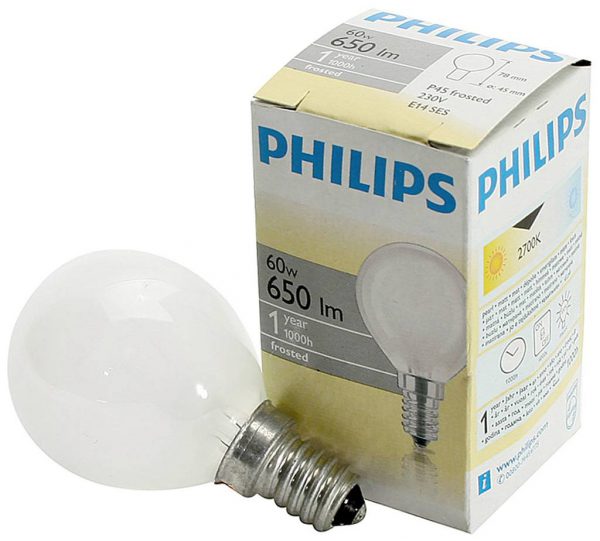
There are many criteria by which they need to be selected.But before you grab all your home lamps, throw them in the trash and replace them with imported ones, make sure: “Are they really the problem?”
Frequent activation
When the light bulb is turned off, it is natural that the tungsten filament inside it is cold, and therefore its resistance is slightly lower than when it is heated. During frequent switching on and off, the passing current evaporates tungsten molecules, causing the filament to break prematurely.
Mechanical and vibration impacts
If a light bulb experiences frequent vibration, is hit or subjected to other mechanical impacts, this cannot but shorten its life. This can be avoided by replacing incandescent lamps with LED or small fluorescent analogs.
Why do halogen light bulbs often burn out?
The halogen lamp is not the most frequent guest in the devices that we use at home. They are usually placed on spotlights, but they can also be installed in a chandelier. These lamps are “panic afraid” of our bare hands. That’s how “touchy” they are. You see, bare hands leave greasy marks on their delicate surface. And from this they begin to heat up intensely, and so their flask collapses.
Before screwing in such a lamp, you need to put on clean gloves. If you suddenly see something similar to dirt on the surface, get rid of it immediately, do not be lazy to wet a napkin with alcohol and wipe it off. And these light bulbs do not tolerate incorrect installation of electrical wiring.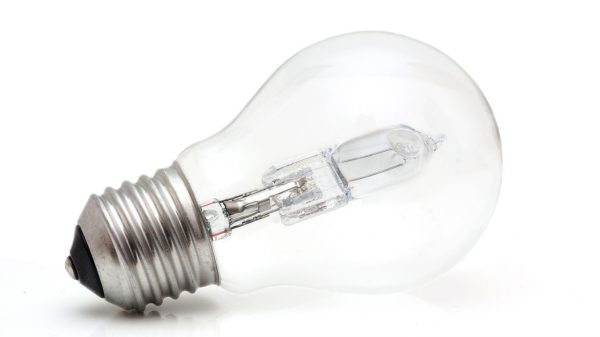
What to do to extend the life of incandescent lamps
As we have already understood, the lifespan of the lamp directly depends on how competently and efficiently the electrical wiring is laid, on what devices are used, on the absence or presence of surges in the electrical network, mechanical influences, ambient temperature and the switch itself. The longer the light bulb is on, the hotter it gets and the faster the tungsten evaporates. The more it heats up, the brighter it shines and the sooner it will fail.
Reference. The average lifespan of an ordinary lamp is a thousand hours. If you measure the intensity of the glow, you can see that after 750 hours its light becomes fifteen percent dimmer.
If the voltage in the network increases slightly, by just five percent, the life cycle of the light bulb is reduced by half. Instead of a thousand hours, she will work only five hundred.
This can be seen in the light bulbs in the entrances of apartment buildings. They only turn on at night. At night the load is minimal, and the voltage accordingly increases. Since the hair of the tungsten filament is very cold while the light bulb is turned off, before it starts working at full power, it would be a good idea to warm it up with a small amount of current. This is why dimmers were invented.
Operating voltage
Light bulbs produced these days are not marked with a specific voltage value, but with a range in which they can operate, for example, from two hundred fifteen to two hundred twenty-five, from two hundred thirty to two hundred forty volts. If you follow these recommendations and make sure that the mains voltage does not go beyond these limits, then the light bulb will shine brightly and work for a long time.
This range is provided by the developers because the voltage is far from the same throughout the entire electrical line. Where there is a substation nearby, it will naturally be higher, and at a distance the voltage will drop.
That is why, when buying a light bulb, look at the current voltage in the network of your apartment. Get yourself a multimeter, just like many people have a blood pressure monitor at home. If the multimeter shows a voltage of two hundred and thirty volts, then you can buy lamps from 30 to 240 volts.
Check the condition of the cartridges
If light bulbs tend to burn out in the same socket, think twice. Clearly something is wrong with him. Measure the temperature inside it while it is running. If it is too hot, then clean all its contacts, slightly bend the central and side contacts.
Use a protection diode
Very often you can see that electricians, when installing lamps in entrances, do not forget about the special diodes in front of them. The voltage does not lose its quality due to this, but the light source can work longer. To do this, a diode, a resistor and the light bulb itself are combined into a series circuit.

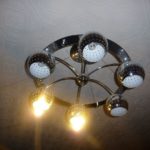



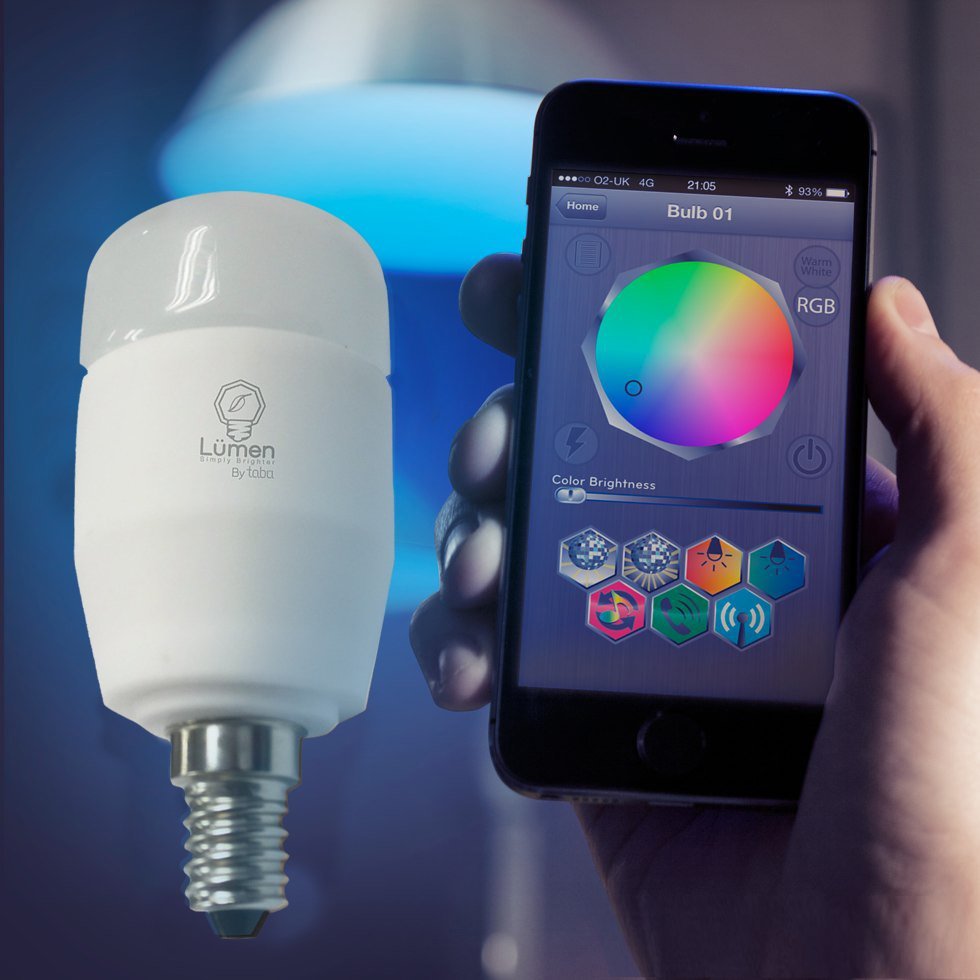
The author wrote a lot of nonsense, he’s too lazy to describe everything. I’ll dwell on one, and I quote: “... Very often you can see that electricians, when installing lamps in entrances, do not forget about the special diodes in front of them. The voltage does not lose its quality..." - the quality is even lost, the light bulb begins to “blink” twice as often, because the diode “cuts” half of the AC sine wave.Because of this, the light bulb does not shine at full strength. And electricians install a diode because of their own laziness, so that they change light bulbs less often